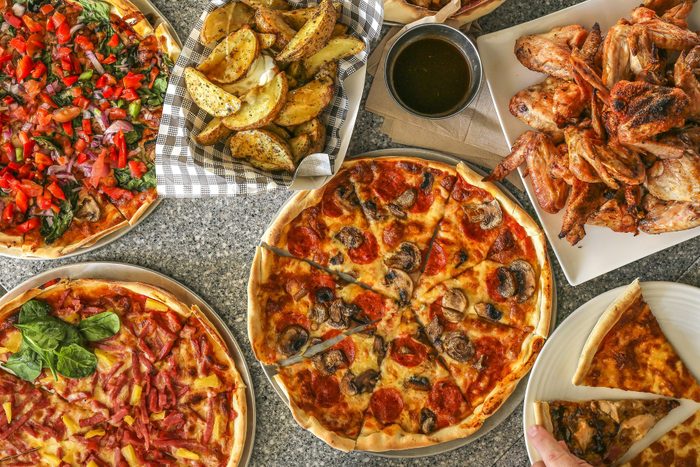
If there’s one thing besides football that’s essential for a great Super Bowl Party, it’s the food. For example, one Super Bowl Sunday staple is chicken wings: According to the National Chicken Council, Americans are expected to eat a “record-breaking” 1.42 billion wings over Super Bowl LVII weekend.
Unfortunately, say Mitzi Baum MSc, the CEO of STOP Foodborne Illness, and environmental epidemiologist Vanessa Coffman, PhD, MS, there’s a lot that can go wrong when you’re prepping food at home for a crowd—especially a few of the classic Super Bowl Sunday foods.
The Healthy @Reader’s Digest asked these food safety specialists for their advice on how to serve those wings, Philly cheesesteaks and Kansas City-style ribs—or whatever game day delicacies your crew will be feasting on—safely.
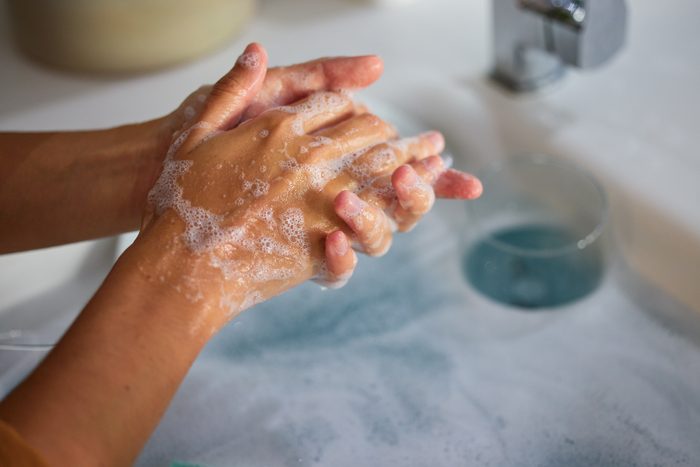
Wash your hands frequently
Of course this isn’t just important for food safety, but Baum emphasizes to make sure you’re always washing your hands with soap and warm water for 20 seconds after handling raw chicken and other meats, and before touching anything else. Also keep in mind that every time you touch a plate or utensil that a guest has touched or eaten from, it’s likely you’ll carry their germs.
Use a clean towel to dry your hands—and, when you’re entertaining, keep a stack of fresh towels nearby to swap them out frequently.
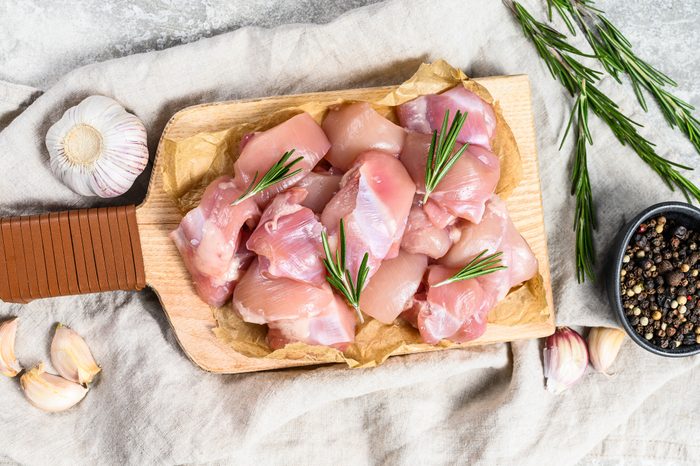
Never wash raw chicken
Baum warns that “raw chicken may have deadly bacteria on, and in, it.”
To avoid cross-contamination, you should never wash raw chicken. “While your mom and grandma might have done it, washing chicken can spread harmful Salmonella and Campylobacter bacteria to other parts of your kitchen and foods,” she explains.
This Is the Difference Between a Stomach Bug and Food Poisoning
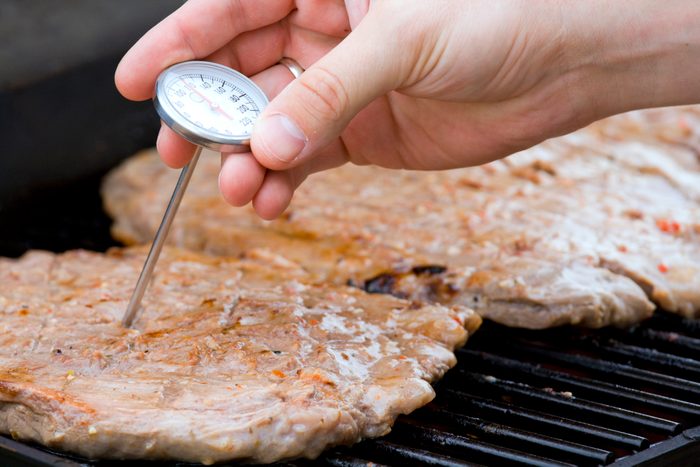
Use a meat thermometer
Whether you’re making a Buffalo dip, frying wings or trying your hand at chicken Phillies, “Always cook chicken to a minimum temperature of 165°F, and check with a calibrated meat thermometer,” Baum says.
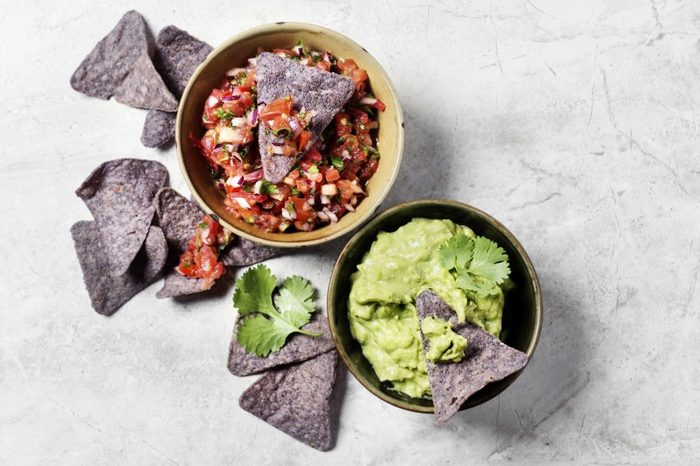
Refresh dips, salads, and mains every two hours
Baum says you should never leave cooked poultry, meat—or any other cooked foods—sitting out for more than two hours without keeping hot things hot (she advises a minimum of 135°F) and cold things cold (a maximum of 40°F). “This prevents bacteria from growing,” Baum explains.
“Another food that typically causes illness on game days are cold salads,” she adds. “I know what you’re thinking—it’s the mayonnaise, but it’s not. It’s the cooked potatoes, pasta, shrimp, egg, or fish in the salad that can become dangerous. These ingredients provide the kind of environment that bacteria love to grow in—the mayonnaise not so much. These salads must be kept cold (maximum 40°F) to prevent harmful bacteria from growing at a rapid pace.”
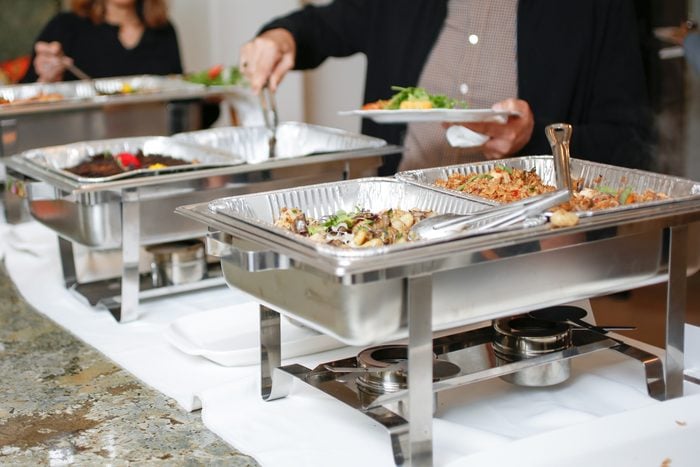
Keep hot foods consistently warm
Keeping hot foods warm enough to stay safe “can be a challenge for those who love to host,” Baum acknowledges. “To overcome that challenge, a food warmer or chafing dish can be one of your best bets against foodborne illness. As a reminder, the safe temperature zone for hot food is 140°F or higher.”
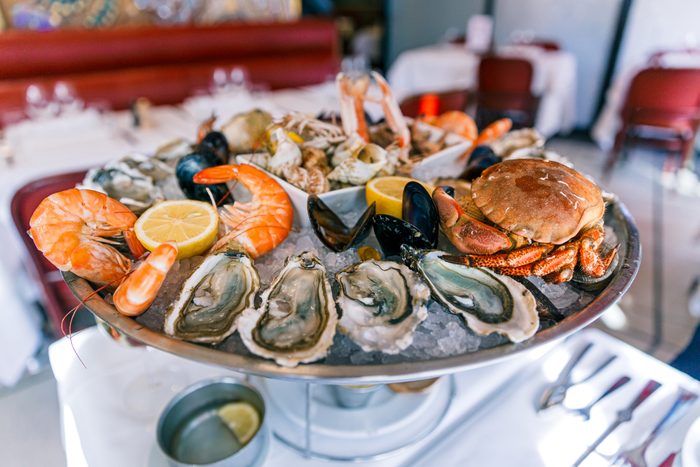
Keep cold foods chilled by placing the dish in a shallow container with ice
Baum says one of the best options for keeping cold foods chilled and out of the “danger zone” is placing the dish in a shallow container with ice. “When these foods are kept at room temperature, they become a breeding ground for harmful, and possible deadly, bacteria like Campylobacter, E. coli O157:H7, Salmonella, and Staphylococcus aureus,” she warns.
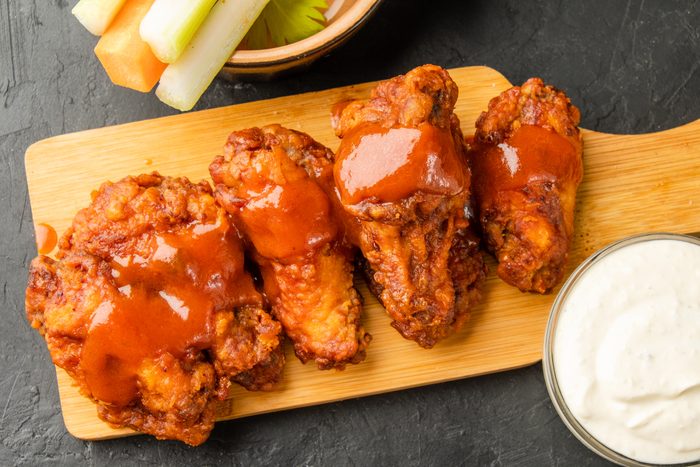
Only serve portions at a time
Once the game starts, Baum suggests putting out snacks that don’t need temperature control, such as pretzels, popcorn, and cheese curls. For Super Bowl foods that do require temperature control, put out half of your total quantity just before kickoff, and replace that portion with your remaining food at halftime.
Baum says the big game provides built-in reminders “of how to pace when foods are served—ensuring that they are fresh and at a food safe temperature. Organize your treats by those that will be served at pre-game and halftime. It’s the perfect planning tool and gives the host an opportunity to enjoy the game, too!”
For foods that are provided for pre-game gatherings, she says you should split them into two portions. “Put out smaller dishes and replace as needed, rather than putting out the whole enchilada at kick-off. By the fourth quarter, it may become cold, unappetizing, and potentially dangerous.”
And at halftime? “Shine bright like Rhianna and dazzle your guests with hot foods from the stove top or oven. Again, use smaller serving dishes to provide the hottest foods possible. Keep any cold items in the refrigerator until it’s time to serve.”

Watch the clock
If food sits out without any temperature control, Baum emphasizes that timing is everything. “After two hours, throw away all proteins and hydrated carbohydrates, like potato or pasta salad. And throw it away after one hour if food sits in temps higher than 90 degrees.”
Hosting 101: Nobody loves to feel overheated at a party…but in a crowded room, 90 degrees can happen.
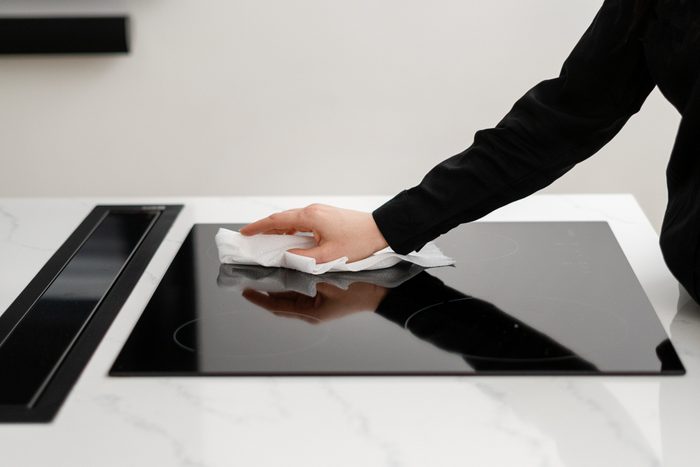
Wipe down all food surfaces often
“To help prevent the spread of harmful bacteria, remove any visible food or crumbs and wipe down all surfaces,” Baum says. “Don’t forget your stove top, counters, handles, and any ingredient containers you’ve touched.” And finally? “Most importantly, don’t forget to wash your hands vigorously for 20 seconds using warm soapy water to help prevent cross contamination.”
